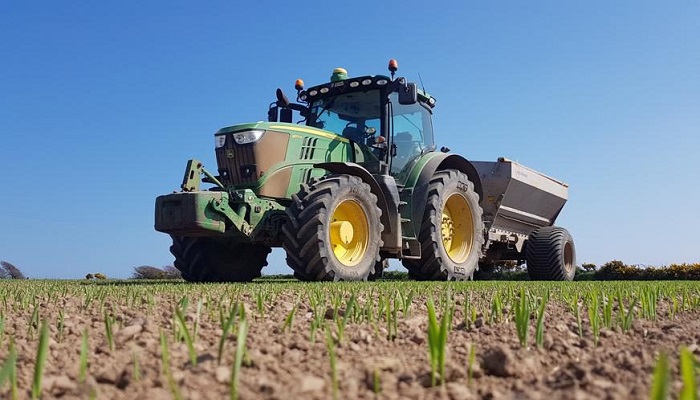20 April 2023
Management of nitrogen in late-sown malting barley

Crops planted in mid-February or very early March have pushed through the growth stages and should be well positioned for management actions, such as wild oat control and fungicide application, explains Rebecca Bayley, Teagasc/Boortmalt Joint Programme Advisor.
However, the delayed planting of a lot of barley means these crops have most of their management actions still to be completed.
The early season management of malting barley becomes increasingly crucial when the planting season is being pushed toward the end of April. Spring crops need to get up and running fast and then stay growing to the end. In a recent Tillage Edge Podcast, Ciaran Collins and Shay Phelan, both Tillage Specialists in Teagasc, discuss critical crop agronomy for later-sown crops.
Shay highlighted the need for adjusting spring barley sowing rates to account for crops’ reduced tillering capacity in order to achieve the highest possible yield. For spring barley that is still to be sown, rates need to be increased to 325 seeds/m² to compensate for expected lower tiller production.
Average days for a new leaf in April is 10 days, whereas a new leaf will emerge every seven days in May. A typical thousand grain weight of 54g would require 206kg/ha (13.2st/ac) at 85% establishment. If seedbed conditions are excellent, this can be reduced to 195kg/ha (12.4st/ac). All crops should be planted on seedbeds that are fine, firm, and level because this will promote uniform germination and establishment. Having the seedbed right will aid in root soil contact for nutrient uptake and growth, as well as moisture transfer for germination. This is very important with later planting as the season is shortened.
With the season being shorter, nitrogen management is a critical factor in spring malting barley, as it impacts both yield and protein. It is very important to make a decision regarding nitrogen rates on malting barley; these need to be taken on a field-by-field basis. Certain growers will have fields where producing lower protein levels is quite achievable, while other growers may have stronger fields that can generate higher proteins. Table 1 shows the suggested rates of nitrogen on malting and distilling barley. However, as later-sown crops are slightly later maturing, it may be important to reduce the total nitrogen applied to help keep protein down in the required range.
Nitrogen fertiliser needs to be applied early – no later than the three-leaf stage for malt and distilling and ideally earlier. If all is applied on the seedbed, there is a greater risk of leaching as nitrogen is very soluble. Also, if it all goes on late, the chances of hitting required grain specification diminishes. There will be fast uptake of nitrogen if it is incorporated into the seedbed and that will allow for early tillering. There is a chance of late tillers by delaying the application of nitrogen, which may not make it to harvest, thus resulting in green immature grain that has the potential to increase protein. A good compromise is to consider incorporating 70-80% of compound fertiliser into the seedbed and the remaining amount once tramlines are visible in order to achieve the required combination of yield and quality.
Table 1: Suggested rates of nitrogen for malting and distilling barley
|
Nitrogen (Based on 7.5t/ha) |
Seedbed/emergence | Early tillering |
|---|---|---|
|
Malting (brewing) barley (150kg/ha N) N Index 1 |
33% of total 50kg/ha N (40 units/ac N) |
66% of total 100kg/ha N (80 units/ac) |
|
Distilling barley (130kg/ha N) N Index 1 |
30% of total 40kg/ha N (32 units/ac N) |
70% of total 90kg/ha N (72 units/ac N) |
Teagasc/Boortmalt farm walks
The Teagasc/Boortmalt Joint Programme will run a series of walks on monitor farms across the country. The first of these walks will take place on Wednesday, 26th April on the farm of David Walsh-Kemmis, Stradbally, Co. Laois, R32 PY89. Attendees will hear topics such as management of weeds and aphids in early sown spring barley crops and the use of PGRs in crops. For any additional information, Teagasc/Boortmalt Joint Programme advisor Rebecca Bayley can be contacted on 0876413184.
